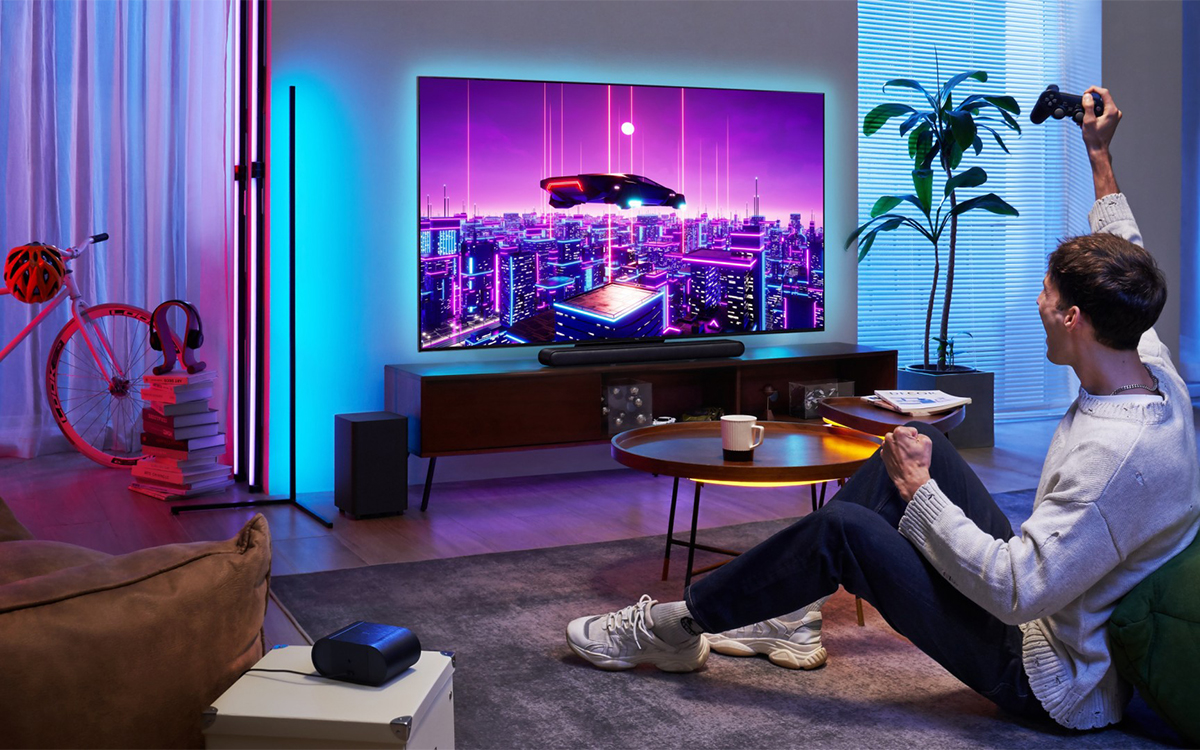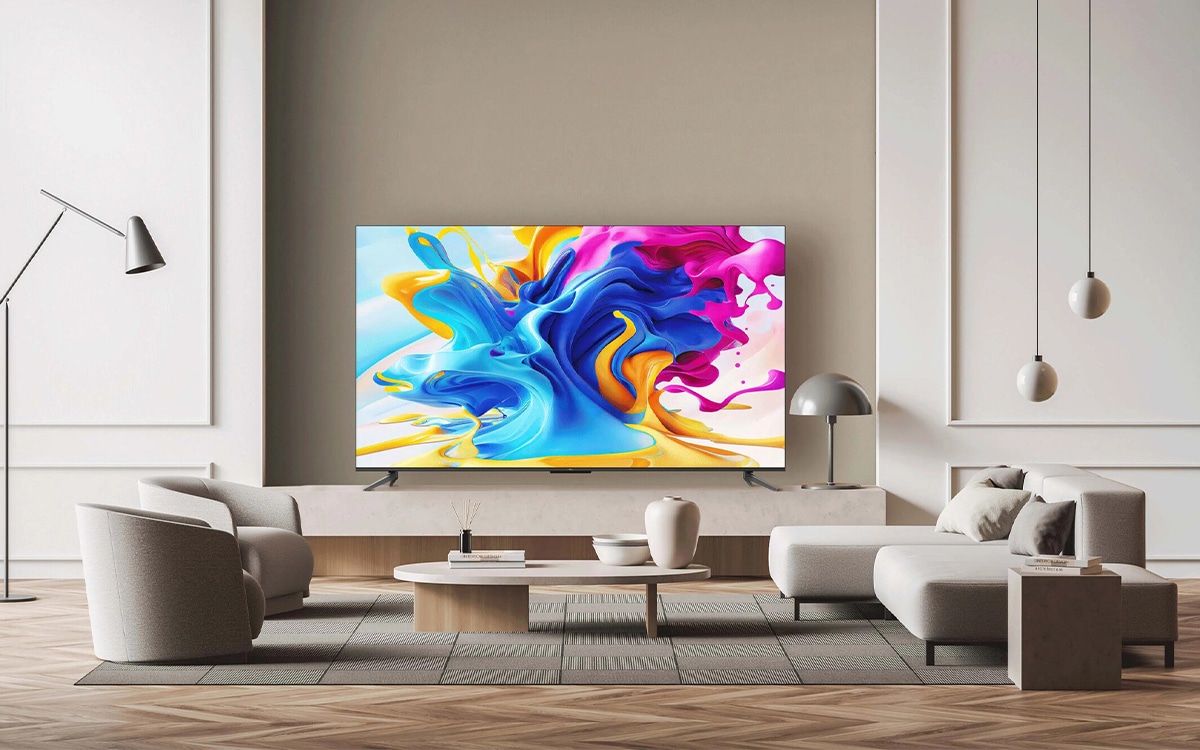In particular, you might find yourself torn between choosing either an OLED or QLED display. Which of the two display types is really best for gaming? And what benefits does each display type really offer?
That’s what our Reliant tech experts are here to find out. In this guide, we’ve put ourselves to the task of analysing the two display types. To see which of the two offers the best solution for your gaming needs.
Are Gaming TVs Better With QLED Or OLED Displays?
OLED and QLED TV displays both offer very different visual experiences. OLED displays are able to offer enhanced contrast, while QLED TVs are able to boast higher brightness levels and richer colours.
Your choice between an OLED or QLED display for your gaming TV will simply come down to what you need. Both display types have their own sets of strengths and weaknesses.
Let’s take a look through both of the options to find out what impact they have on the gaming experience.
OLED
Benefits
Highly Responsive
OLED TVs are perfect for pro gamers. This is because OLED displays have incredibly high refresh rates. OLED TVs also pair this with an incredibly low latency. An OLED TV is able to refresh its screen incredibly quickly. This allows for hundreds of individual images to be rendered on screen in a single second. When paired with high-frame-rate content, OLED TVs look incredibly smooth.
It’s also worth noting how OLED displays work. OLED displays make use of an array of self-illuminating pixels. Because the pixels provide their own light, they’re able to respond incredibly quickly to your input. This allows pro gamers to achieve a masterful level of control.
VRR Compatibility
VRR refers to “Variable refresh rate”. This is a technology that allows a TV to adjust its refresh rate to be perfectly aligned with an input’s frame rate. Let’s say you were gaming at 40 frames per second on a 60Hz TV. VRR technology would be able to lower the screen’s refresh rate to 40Hz. This helps prevent screen tearing.
VRR technology works best on OLED TVs.
Drawbacks
Screen Burn-In
OLED TVs are highly vulnerable to screen burn-in if not cared for just right. Screen burn-in occurs when elements on the screen are left static for extended periods. Burn-in most often happens when consoles are left idle on their home screens.
Unfortunately, burn-in can also be caused by persistent elements of games. Especially HUD elements, like health bars and mini-maps. If you were to play a game too long, you may increase the risk of these elements burning into your TV’s display!

QLED
Benefits
Improved Colour!
QLED TVs make use of quantum dot technology. Packed beneath the screen of one of these TVs is a complex array of microscopic quantum semiconductors. When they are electrified, these semiconductors emit light of a specific colour!
As a result, QLED TVs are able to reproduce highly accurate and realistic colours. They’re also perfect for use with HDR technology. QLED TVs are perfect for those who want total immersion in their games.
Improved Brightness Levels
QLED TVs boast some seriously impressive brightness levels that will bring life to your favourite games. This makes them perfect for daytime gamers. You won’t have to compete for a good image when the sun insists on shining through your windows.
You can also safely crank up the brightness on a QLED TV without putting the display at risk of burn-in. Higher brightness levels make it simple to lose yourself in the game.
Drawbacks
Higher Input Latency
Unfortunately, QLED TVs have a much higher input latency than OLED TVs. This can make them a much less attractive option for pro gamers who need total control in every moment. QLED TVs tend to have around one or two seconds of input lag, while OLED TVs have less than even a millisecond. Going as low as 0.2 milliseconds.
QLED TVs have a few milliseconds of extra input latency than OLED TVs. However, this will only affect the most dedicated of pro gamers. QLED TVs are still immensely responsive to use!
For casual gamers, this might seem like nitpicking. What difference would a single millisecond make? If you enjoy gaming as an occasional activity. By all means, grab a QLED TV of your own. However, for pro gamers, even a single millisecond can mean the difference between victory and defeat. If you’re a pro gamer, you’d be better off with an OLED TV!
Frequently Asked Questions
Are Gaming TVs Better With QLED Or OLED?
Both OLED and QLED TVs are able to offer immense visuals for all kinds of gamers. OLED TVs offer striking contrast, while QLED TVs are able to recreate a greater spectrum of colours. However, with regard to competitive players, we would have to give a slight edge to OLED TVs. They boast lower input latency.
Should I Use An OLED For Gaming?
If you’re a pro gamer unsure which TV type to go for, we would have to strongly recommend an OLED display. OLED TVs are perfect for fast-paced pro gaming. They are incredibly responsive and have barely any input latency. This means you will feel totally in control of your character in your favourite games!
Is There A Downside To OLED?
One of the biggest potential drawbacks to OLED TVs is the fact that they are vulnerable to screen burn-in. Screen burn-in is a direct result of leaving a static image on-screen for a number of hours. OLED TVs can suffer screen burn-in very quickly. Especially when the brightness is cranked too high. That’s why it’s best to lower your TV’s brightness level.





